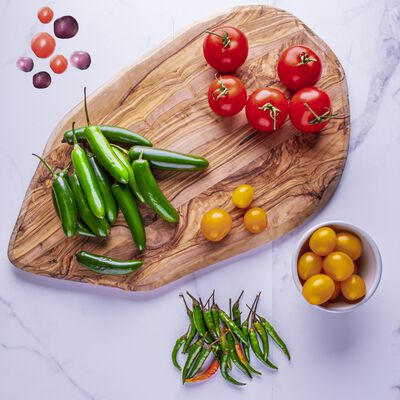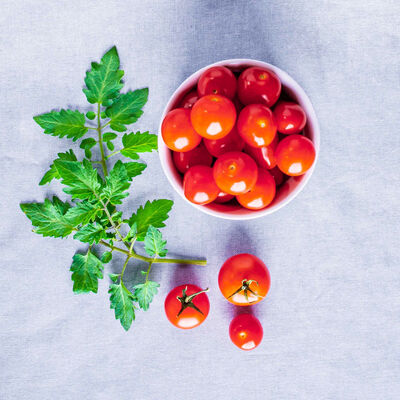
How to pollinate AeroGarden tomatoes and peppers
We need to “be the bee” and do the pollination.
Unpollinated flowers simply fall off the plants without setting fruit, and failure to pollinate is one of the greatest causes of disappointment in growing tomato and pepper plants.
Many plants, including tomatoes, peppers, cucumbers and melons require pollination in order to produce fruit. When growing outdoors, this critical step is performed by wind, animals, bees and other insects. When growing indoors, we need to “be the bee” and perform this task ourselves if we want to enjoy those vine-ripened tomatoes in the middle of winter.

In broad terms, there are two types of pollination in the veggie garden we'll cover today:
- Same flower pollination. Plants in this category include peppers, tomatoes and eggplants. In these plants, pollen just needs to be released from one part of a flower to another part in the same flower in order for pollination to occur. Wind is the most common pollinator here, literally "shaking loose" the pollen. Insects, like bees, also help with the vibration of their wings or the physical action of their climbing on flowers moving the pollen around.
- Multi-flower pollination. Plants in this category include cucumbers, melons and squash. These plants produce both male and female flowers. For pollination to occur, pollen must move from the male flower to the female flower. Generally, this is accomplished by insects flying or crawling from one flower to another.
As indoor gardeners, we usually have an absence of the three main outdoor pollinators: we don't have much wind or air movement, there aren't many animals in close contact with our gardens, and we don't have many pollinating insects in our homes. So we need to perform these vital tasks ourselves.
Pollinating Tomatoes, Peppers and Eggplants
With our tomatoes, peppers and eggplants, pollination is fairly simple and can be accomplished in a variety of methods, including:
- Gently shaking or vibrating the plants or individual flowers a few times a week (daily is best) after flowers appear (see video below).
- Using an electric toothbrush to vibrate the stem or individual flowers. Kids electric toothbrushes are perfect and can be purchased for a few dollars each. This method is best for tougher pollinators like eggplants.
- Directing a fan at your garden. A fan on your indoor garden has many benefits, including increased pollination.
Ways to Pollinate for Maximum Vegetable Yields
Pollinating Cucumbers, Melons and Squash
With plants that have male and female flowers, we need to move the pollen from the male flowers to the female flowers. Many plants will produce a large amount of male flowers first, then the female flowers start to appear. You can tell the difference between male and female flowers by studying them closely.
Male flowers are smaller and you can often see the pollen as "dust" inside the flowers. Female flowers tend to be larger and often have a small, unfertilized fruit at their base. For example, with cucumbers, you can actually see a small ½-inch long cucumber at the base of the female flowers. If left unpollinated, this will drop off. If pollinated, it grows into a full sized fruit. With practice and observation, you'll get good at telling the difference.
To fertilize these plants, simply use a cotton swab or small artists paintbrush to move pollen from the male flowers to the female flowers. This too takes some practice, but you'll know when you are getting good as you start enjoying, literally, the fruits of your labors.
Summary
Playing mother nature and learning to pollinate your indoor plants is fun, easy and rewarding. Regular and active pollination results in far larger yields than are accomplished without it, so getting good at it is worth your time and attention. Sometimes it can be difficult to tell if flowers are ready for pollination or if they have been pollinated, so the instructional video above contains many pictures of pepper flowers in various stages of growth as well as detailed instructions on how to pollinate plants in your AeroGarden.



